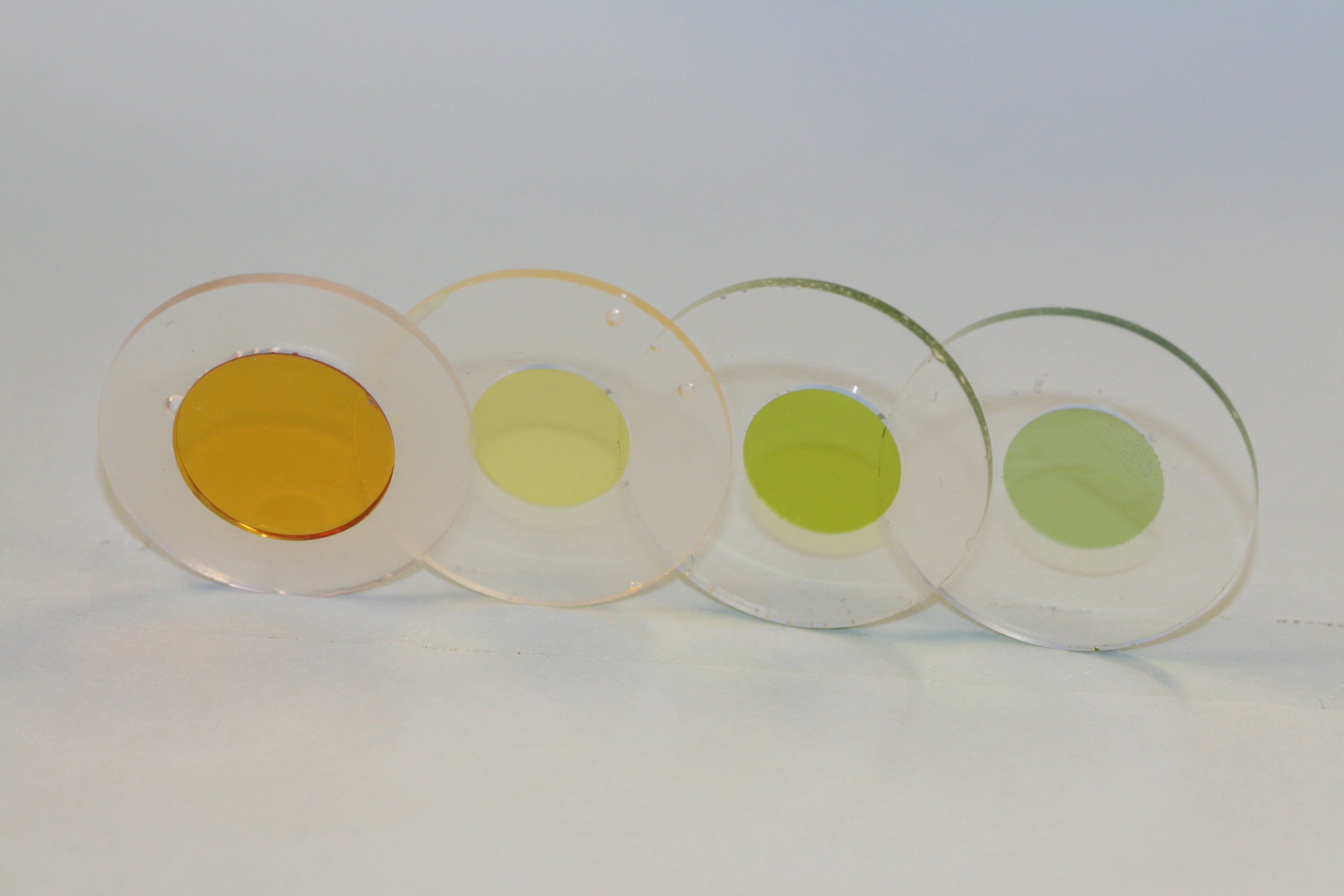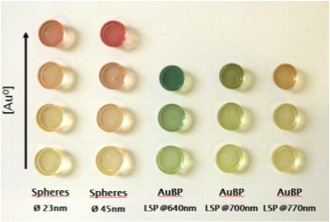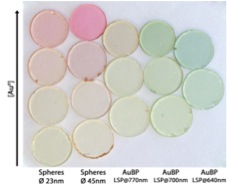Materials for nonlinear absorption
In the defense field, we developed optical power limiters, based on nonlinear absorption in the visible wavelengths and at telecommunications wavelengths. In the crucial perspective of development of solid optical limiters, a new preparation method based on fast gelation reactions was developed leading to unprecedented optical power limiting performance in solids. (Adv. Funct. Mat. 2009, 19 (2), 235-241. ACS Appl. Mater. Interfaces 2012, 4 , 2369–2377). In the telecommunications spectral range, we used aza-Bodipy derivatives, presenting linear absorption around 750 nm with high potentialities TPA-related broadband nonlinear transmission in solution (Adv. Mat. 2009, 21, 1151–1154). The first bulk optical power limiter has been designed in this spectral range (J. Mater. Chem. C 2014, 2, 5105-5110).

Hybrid materials for optical limiting in the visible
This project concerns the design of optical filter for the protection of optical sensors against laser in the visible and near infra-red wavelengths. During the last years, thanks to the support and to the collaboration with the Direction Générale des Armées (DGA) and Thales TR&T (CA group) and the Swedish Defence Research Agencies (FOI/FMV) and SAAB, we have proposed different series of molecules and materials presenting two-photon absorption based optical limiting behaviour from the visible (532 nm) to the NIR (1.06 µm) up to telecommunication wavelengths (1.5 µm). In all cases, the optical limiting process in nanosecond regime follows a 2+1 photon absorption process, namely two-photon absorption (TPA) followed by excited state absorption (ESA). It is worth noting that whereas the molecular engineering rules for TPA are well established, almost nothing is known about ESA and behaviour in the material.

Hybrid plasmonic materials before optical polishing

Hybrid plasmonic materials after optical polishing
OL materials at visible & telecommunication wavelengths. The project is centred on the design of efficient chromophores and their incorporation in solid state materials. The chromophores families, cyanine / aza-bodipy and platinum acetylides, is developed in order to optimise their TPA in the visible and around 1.5 µm respectively. Great endeavours is devoted to their incorporation into solid material like sol-gel bulk material or in sol-gel nanoparticules. In these matrices, the chromophore should be simply diluted or (nano)-crystallised to enhance its concentration. Research programs are funded by the Swedish Defense Research Agency (FOI), DGA, Thales and a partnership with the Air Force Research Laboratories
The next issues will be to improve the nonlinear absorption using plasmonic structures introduced in the material concomitantly with the dyes. When controlling the interactions between the dyes and the plasmonic nanostructures on should be able to strongly enhance nonlinear absorption. Preliminary results show strong positive impact in this sense.
We should now investigate the fundamentals of these interactions. To develop this project, we will apply to « Projet Rapid » proposed by DGA. This application will be supported by MATHYM and Thales, which will be partners.



